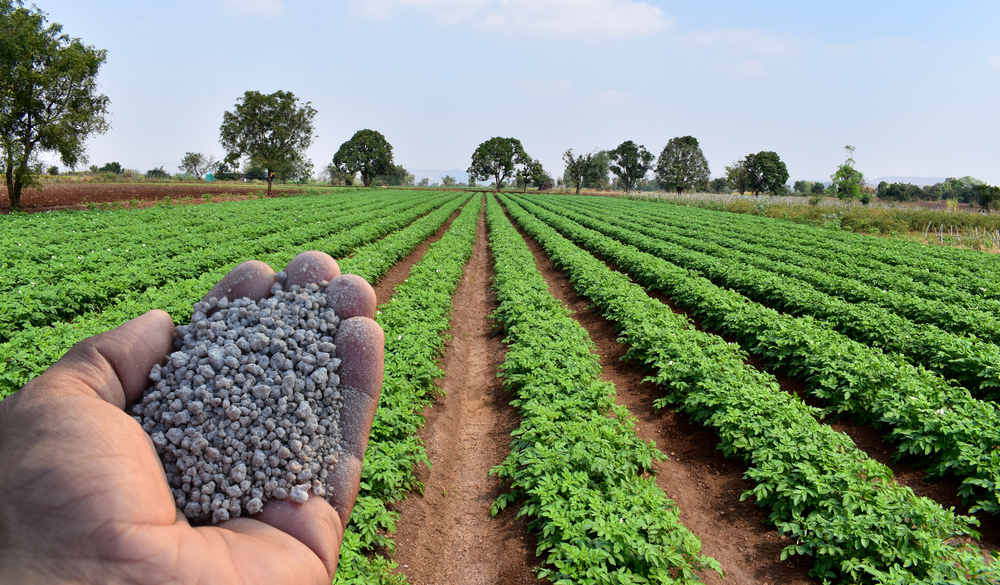New research quantifies the fertilizer lifecycle and outlines various approaches to make the industry more sustainable.

Fertilizer. It’s a major contributor of greenhouse gases, accounting for roughly two percent of global emissions and 10 percent of agriculture’s environmental footprint.
But now, a group of researchers from the U.K. has built a roadmap that quantifies the source of emissions and outlines what reduction methods are possible. The study, published in Nature Food, found that two-thirds of all greenhouse gas emissions take place after fertilizers are applied onto cropland, while one-third of emissions result from fertilizer production. A combination of technical, agricultural and policy interventions in both areas, however, could reduce emissions by as much as 80 percent by 2050, the study found.
Researchers say increasing the efficiency of fertilizer use is the single most effective strategy to reduce emissions. Precision agriculture, the timing of application, using improved plant breeds that better utilize fertilizer and adopting improved irrigation methods are outlined as ways to reduce emissions by nearly 50 percent.
They suggest that replacing some of the fertilizers with the highest emissions, such as urea with ammonium nitrate, could reduce emissions by anywhere between 20 percent and 30 percent. Fertilizers could be mixed with chemicals called nitrification inhibitors, which prevent bacteria from forming nitrous oxide, resulting in an emission reduction between 42 percent and 55 percent.
The research is the first of its kind to make the calculations from petrochemical production to farm application. Notably, findings also revealed that manure and synthetic fertilizers emit the equivalent of 2.6 gigatonnes of carbon per year—more than emitted by global aviation and shipping combined.
“I see this opening the door to a lot of other important questions of how we can best reduce the amount of fertilizer as much as we can, without any loss in productivity of crops,” says André Cabrera Serrenho, a co-author of the paper and assistant professor for Cambridge University’s Department of Engineering. “This is what matters at the end of the day, and we have started to paint a clearer picture of it all.”
Both the production and use of fertilizers, particularly nitrogen fertilizer, release carbon dioxide, nitrous oxide and methane. Natural gas, coal and oil are used as feedstock and fuels for the production of ammonia, a crucial ingredient in fertilizer. These gases are also released from the extraction and combustion of these fuels as well as the product of chemical reactions. Additional emissions result from the generation of electricity used to drive the compressors and pumps.
When fertilizers are used on cropland, nitrous oxide is generated through a chemical reaction between soil bacteria and the fertilizer via nitrification and denitrification. Carbon dioxide is also produced as urea and ammonium bicarbonate break down in the soil.
The paper states that its recommendations will only be worthwhile if the fertilizer industry takes steps to decarbonize—a specific area where public and private investment could also be beneficial. Electrolysis could be used to supply hydrogen in replacing ammonia synthesis, where up to 27 percent of total emissions could see a reduction. Electrifying the production process using electric heating also has the potential to reduce 21 percent of total emissions by avoiding fuel combustion. Carbon capture and storage was also outlined as having the potential to reduce current emissions by 25 percent by 2050.
Cabrera Serrenho says he hopes the research helps facilitate better public policy towards emission reductions.
“Farming is an incredibly tough business at the moment,” he says. “There are very few incentives right now for both farmers and fertilizer companies to care about emissions or to tackle fertilizer use because it’s largely driven by costs. I believe our research highlights some need for incentives to facilitate behavior. ”
The study’s findings come against a backdrop of widespread global inflation, and countries such as Holland, New Zealand and Canada face political tensions with farmers who fear agriculture emission reduction policies will curtail food production and, in turn, their profits. But for the U.S., where the Biden administration has been clear that net-zero emissions will require adjusting agricultural systems, the study’s recommendations present a possible way forward.
Cabrera Serrenho says the new study only scratches the surface of what’s possible. Right now, he’s keen on exploring the impact of specific dietary changes on fertilizer use and emissions.
“It’s worth pointing out that we still have 20 percent of emissions that haven’t been accounted for, that we don’t know how we could possibly eliminate [them],” he says. “This is important and yet concerning as we set out to make food systems more sustainable.”
Reducing fertiliser use means reducing crop output globally. This means that bioethanol from corn (1/2 the US corn crop ends up in gasoline) or from sugar beet or barley might have to be reduced. Also palm oil, canola oil, soya and other ‘biodiesel’ sources might be challenged. We may have to choose between feeding cars or feeding human beings, but that will take a change to the subsidy system that favors motor vehicles. Farming can save the planet, easily. https://www.sustainablesoils.org/about-soils/third-party-articles?view=article&id=475&catid=2
Sometimes I just hate the relentless Carbon Story because it is so narrow and neglects opportunities like this. More precise application of Fertilizers can provide additional benefits such as cost savings.
Be weary of the carbon capture and storage. There are project proposals for this currently in the Midwest. There are no safety regulations and plans to pipe and transport highly pressurized liquid CO2 across a number of states to be deposited underground in central Illinois. Can’t imagine how detrimental such a project will be to the land, water, agricultural fields and communities if such a things gets approved. The costs will outweigh any benefits.